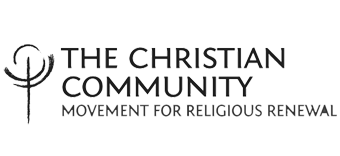Latest News
Kitchen Chat and more…
Kitchen Chat and more…
It is an ancient debate: how much responsibility does a human being have for his or her own redemption? For redeeming others? For redeeming the earth? One picture is to see ourselves as overshadowed by an all-powerful God who is “running the show” and “calling the shots”. Over time, human beings let things get into such a mess that God had to send His Son to straighten everything out for us. One simply needs to recognize that this is so, even on an individual scale, and to align oneself somehow with divine intention.Not a bad start.
And one could also take the view that this picture of God as parent (after all, we call Him our Father), is a relationship that changes over time, just like its earthly counterpart does. The younger the child, the more the parent needs to structure its life so that the child gets what it needs in order to grow into an independent, responsible adult. Gradually, as the child matures, the parent can entrust ever greater responsibility to it for the running of its own life. Mistakes are great learning opportunities.
But once the child has grown into an adult, it would be disrespectful, or even insulting, to treat the adult as a child. It would even show the parent’s own lack of faith in its own parenting.
One could think of humankind as a whole as having reached its young adult phase. At this point, the Father has withdrawn from exercising His parental prerogatives with us because that would be disrespectful with his grown children. The choice for deciding to join in the work of redemption in this time period has been given over into ever-maturing human hands. Mistakes are great learning opportunities.
Yet God has not turned his back on us in this: God has given us a peer, an older brother, who is willing to walk with us, if we will have Him. This brother can give us guidance and help us along the redemptive path, since He knows the Father’s heart, the Father’s intentions for the world.
He, Christ, God’s Son, is our brother. He can teach us how best to exercise the responsibilities we have for helping to redeem ourselves, to redeem others, to redeem the earth.
We contribute to our own redemption by increasing our self-awareness. We contribute to redemption with an objective awareness of both our maturing strengths and our weaknesses. Working with those strengths and weaknesses in ourselves, with Christ’s help, will aid us in our maturing. Examining, for example, that in certain situations I end up angry, or sad, or behaving badly, and finding ways to overcome that, is my part in the work of my redemption. Christ will add His strength to our efforts. Deciding to find ways to increase my strengths, especially in service of others will be supported by Christ. I learn to work responsibly with and on myself.
It is such inner work that will then rightly allow us find ways to help redeem others. The work in twelve step programs is an example of such redemptive working with others. And such strengthening of self-awareness will also ultimately lead us to find ways of redeeming the fallen nature of all the kingdoms of the earth.
For as Paul, an individual who worked closely with our Brother, says, “All around us creation waits with great longing that the sons of God shall begin to shine forth in mankind….For the breath of freedom will also waft through the kingdoms of creation; the tyranny of transitory existence will cease. When the sphere of the Spirit grows bright, unfreedom will be replaced by the freedom which is intended for all God’s offspring.” Romans 8:19,21, The New Testament, a rendering, by Jon Madsen.
The Creed of The Christian Community contains the line: Communities, whose members feel the Christ within themselves, may feel united in a church to which all belong who are aware of health-bringing power of the Christ.
This thought starts with the fact of individuals who are aware of Christ’s healing power working within themselves. What this might mean may be slightly different for any given person.
For the one, it may be the awareness that ever and again, he or she rises out of fatigue or illness to renewed strength and health. He becomes aware that the name for this resurrecting, healing force at work within is Christ.
For another it may mean an awareness that, despite considerable failings and shortcomings, she knows that she is loved and somehow carried. And she knows and recognizes that the name for this force of surrounding love is Christ.
For another it may mean looking back over one’s life so far, and recognizing in it a coherence, a meaningful pattern. In this coherent pattern, one might see that even, the valleys became places of change, and of transformation. And one sees that these transformations, these resurrections into something new, is the Christ’s will working to heal our lives.
Out of this kind of awareness, individuals can feel themselves united in a community with others who also are aware of His healing power. Such communities and their members can together be a part of a larger, an invisible church beyond churches. This invisible supra-church is not a church founded on belief; nor is it a church based on dogma or teachings; it is a church grounded in awareness, based on experience.
It is this experience, this awareness of Christ’s healing power in one’s own life, and in the lives of others, that is the true basis of Christian community. Despite our possible differences in belief, in temperament, in thinking, we are united in our experience of Christ as a healing force in our lives. We can recognize Him at work in others. This is the real basis for Christian community. And through such Christian communities, we can possibly become conduits for His healing power in all the various communities to which we belong.
We often use the term ‘only human’ to convey our weaknesses and our failings. But there is a further dimension to our being human. It is a dimension connected with the future, and with developing and expanding our specifically human potential.
We all have a physical, material form. In this, we are like the rest of the mineral world. This physical form, our body, is moreover alive; it breathes, it reproduces, it metabolizes. In these living functions, we have capacities that we share with the plants. We also have feelings and emotions; we act and react; we perceive and cognize. In this we are akin to the animals.
What is left? Where are we uniquely human?
One of the places in which we are uniquely human is in our self-awareness. We are aware of ourselves, as a self, as a unique and more or less discrete entity. We have a memory of that self that goes back to early childhood. Furthermore, this self-aware self is capable of learning to do what it cannot yet, to be what it is not yet. This capacity is far greater than what can be trained in an animal.
This self is also capable of shame (self-judgment), and is capable of conscience, of knowing what kinds of decisions I can or ought to make in the future. Animals act and react by instinct (so do we, sometimes, out of our animal nature). But human beings can act as a sole result of their thinking. And thinking is a basis for creativity.
This is because human beings can make decisions. They can decide to over-ride their natural instinct for self-preservation. They can decide to overcome the instinct for preservation of the species if necessary. Human beings can set goals and figure out the steps to realize those goals. They can create works of art. They can try to consciously serve what is good, what is true, what is beautiful.
Human beings can also decide to put someone else first. In other words, human beings can decide to over-ride their plant and animal natures and can consciously participate in their own further evolution.
So, becoming truly human is not merely to rue our failings and weaknesses. Rather, becoming truly human involves building the strength of our self-awareness and the power to carry through on our decisions in creative ways.
At the same time, becoming truly human involves developing the capacity, paradoxically, to override our own naked self-interest, and to learn to sacrifice, to make an offering for the benefit of others.
In the Sunday Service for the Children, we hear that human life becomes desolate and empty without love. We also hear that Christ is the Teacher of Love. To become truly human is to become a student on the Christ path. On this path we are learning how to love, creatively. We set ourselves upon this path when we decide to carry out our intention to evolve ourselves along a trajectory of love.
Where are we uniquely human? In those moments when our creative self shines forth selflessly.
| Teaching/Learning | — | Receiving the Message |
| Offering/Giving | — | Offertory |
| Changing/Transforming | — | Transubstantiation |
| Uniting | — | Communion |

